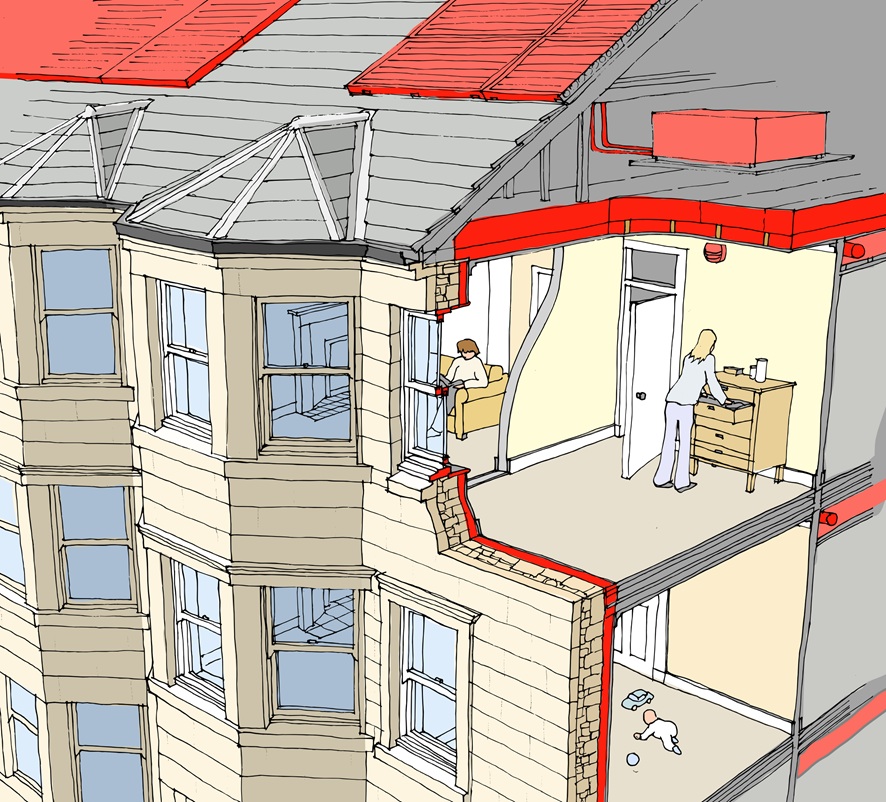
Project Title: PassivTEN Glasgow
Submitting organisation: John Gilbert Architects
Context: Study
Brief summary of project
Pre-1919 sandstone tenements form around 23% of Scottish housing stock and around 30% of Milnbank Housing Association’s properties. Their construction makes them durable and the decorated facades are part of the character of Scottish cities.
However in Milnbank’s Housing Association’s area, occupation of tenement properties is linked to high levels of fuel poverty and cold homes. This study moved beyond conventional incremental improvements to tenements to consider a deep retrofit, in stages up to Passivhaus levels, to eliminate fuel poverty from these types of homes, without damaging the historic character of the streets.
Like many housing associations and owners living in tenement flats, Milnbank Housing Association has already made a number of individual improvements to the flats. These are valid but to make significant changes to the carbon emissions, energy cost and comfort of a tenement flat.
This study illustrates the significant changes that are required. The outputs of this study show that, with the correct funding in place, it is possible to upgrade sandstone tenement properties to a level that eliminates the possibility of fuel poverty.
The study demonstrates that airtightness in tenements should be considered as important as thermal insulation and shows how this could be achieved without damaging the historic fabric.
This study also demonstrates the benefits of considering tenements on a close-by-close basis rather than individual flats this has implications for housing associations’ retrofit programs and funding regulations.
This project not only bases these interventions on testing and analysis of tenements (of which there is precious few records of) but also outlines detailed costs for the work. The costs are significant but show the need for funding this type of retrofit which can be contrasted with the benefits.